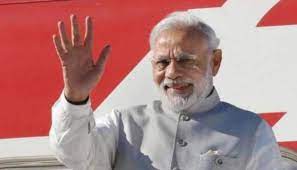Pro-Palestinian rallies have led to the arrest of college students around the United States
Harder crackdowns on protesters are being justified by concerns about threats to Jewish students and professors.
Universities around the United States are finding themselves embroiled in increasingly heated standoffs with pro-Palestinian student demonstrators.

Hundreds of protesters have been given a deadline by the administration of Columbia University in New York to vacate a sizable campground. Dozens of students, however, were still confined inside two buildings on a school in Northern California.
Hundreds of students have been arrested on suspicion of trespassing or disorderly behavior as a result of these two recent events, which are part of larger student protests against Israel’s conflict with Hamas.
Yesterday, Minouche Shafik, president of Columbia University, threatened to “consider alternative options” if students and administration did not come to a resolution to evacuate the camp by midnight.
No word about a deal surfaced by the deadline. Some demonstrators seem to be tearing down their tents in the videos, while others are vocally refusing to back down.
This escalation occurred the evening before to US House Speaker Mike Johnson’s journey to Columbia, South Carolina, to meet with Jewish students and discuss the problem of antisemitism on university campuses.
Protests by students at an encampment on the MIT campus occurred on Tuesday, April 23, 2024.Georges Krupa/Copyright 2024 “The AP” reported. Copyright © all rights reserved.
Nationwide, demonstrators gathered at California State Polytechnic University, Humboldt, and began barricading the doors to the university with tents, chains, and furniture. In a more traditionalist part of California, some 480 kilometers north of San Francisco, the rebellion was less anticipated.
Protesters yelled out, “We are not afraid of you!” when riot police forcefully intervened at the building’s entry, as captured on video.
According to the university, three students were taken into custody, and the campus remained closed until Wednesday. Two buildings on campus were occupied by students on Tuesday, the exact number of whom are unclear.
Careful equilibrium
Universities are grappling with the challenge of balancing campus safety with the right to free expression in the wake of the surge of protests. So far, many establishments have been tolerant of the demonstrations, the main demands of which have been that educational institutions denounce Israel’s attack on Gaza and cut ties with businesses that provide weapons to Israel.
However, some schools are becoming more harsh in their disciplinary actions, claiming that Jewish students and staff are in danger because of the demonstrators’ antisemitic condemnation of Israel.
After months of draughtiness, the arrest Thursday of over a hundred pro-Palestinian protesters camped out on Columbia University’s upper Manhattan campus ratcheted up the intensity of the demonstrations.
As of Monday night, 133 protestors were detained by the police at New York University; all of them were later released with court summonses to face disorderly conduct charges.
When demonstrators at Yale University refused to disperse from their camping on the campus plaza, police in Connecticut detained 60 people, 47 of them were students.
Tuesday saw two demonstrations in the Midwest: one at the University of Michigan, where the number of tents had increased to about forty, and another at the University of Minnesota, where nine anti-war protestors were detained after the dismantling of a camp outside the library. In the afternoon, hundreds gathered at the Minnesota campus to call for their freedom.
Following the horrific assault on southern Israel by Hamas, which resulted in the deaths of over 1,200 people—the majority of them civilians—and the abduction of nearly 250 hostages, demonstrations on campus erupted.
The local health ministry reports that over 34,000 Palestinians have been murdered in the Gaza Strip as a result of Israel’s aggression. While the ministry does not differentiate between fighters and non-combatants, it does state that women and children make up at least two-thirds of the casualties.






